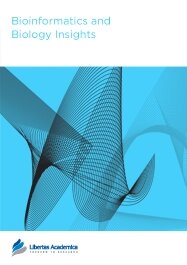

Publication Date: 01 Dec 2013
Type: Original Research
Journal: Bioinformatics and Biology Insights
Citation: Bioinformatics and Biology Insights 2013:7 357-368
doi: 10.4137/BBI.S13279

The neuron-restrictive silencer factor (NRSF) is a zinc finger transcription factor that represses neuronal gene transcription in non-neuronal cells by binding to the consensus repressor element-1 (RE1) located in regulatory regions of target genes. NRSF silences the expression of a wide range of target genes involved in neuron-specific functions. Previous studies showed that aberrant regulation of NRSF plays a key role in the pathological process of human neurodegenerative diseases. However, a comprehensive set of NRSF target genes relevant to human neuronal functions has not yet been characterized. We performed genome-wide data mining from chromatin immunoprecipitation followed by deep sequencing (ChIP-Seq) datasets of NRSF binding sites in human embryonic stem cells (ESC) and the corresponding ESC-derived neurons, retrieved from the database of the ENCODE/HAIB project. Using bioinformatics tools such as Avadis NGS and MACS, we identified 2,172 NRSF target genes in ESC and 308 genes in ESC-derived neurons based on stringent criteria. Only 40 NRSF target genes overlapped between both data sets. According to motif analysis, binding regions showed an enrichment of the consensus RE1 sites in ESC, whereas they were mainly located in poorly defined non-RE1 sites in ESC-derived neurons. Molecular pathways of NRSF target genes were linked with various neuronal functions in ESC, such as neuroactive ligand-receptor interaction, CREB signaling, and axonal guidance signaling, while they were not directed to neuron-specific functions in ESC-derived neurons. Remarkable differences in ChIP-Seq-based NRSF target genes and pathways between ESC and ESC-derived neurons suggested that NRSF-mediated silencing of target genes is highly effective in human ESC but not in ESC-derived neurons.
PDF (4.41 MB PDF FORMAT)
RIS citation (ENDNOTE, REFERENCE MANAGER, PROCITE, REFWORKS)
Supplementary Files 1 (3.24 MB ZIP FORMAT)
BibTex citation (BIBDESK, LATEX)
XML
PMC HTML

Bioinformatics and Biology Insights fills a gap in current journals. Ever more often, bioinformatics and detailed analysis of data creates novel, unexpected insights. It is good to have a journal which focusses on exactly this aspect of bioinformatics research, putting the biology insights upfront with high respect for the different methods in bioinformatics.
Facebook Google+ Twitter
Pinterest Tumblr YouTube